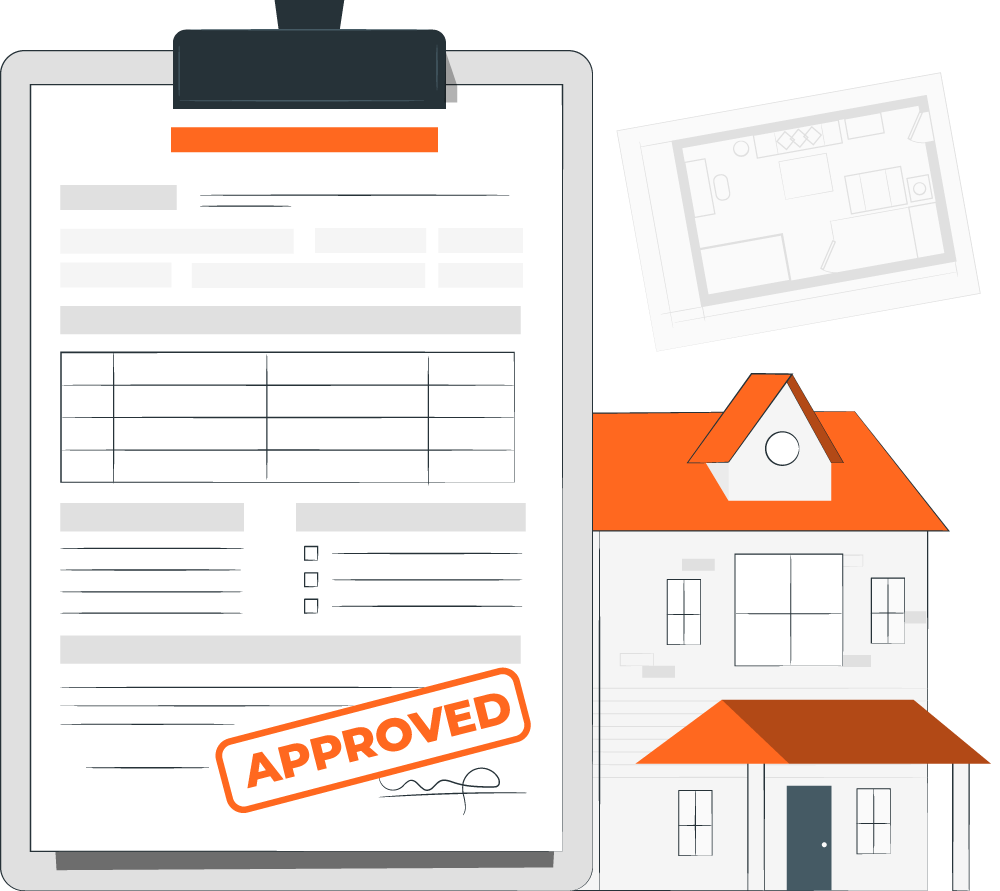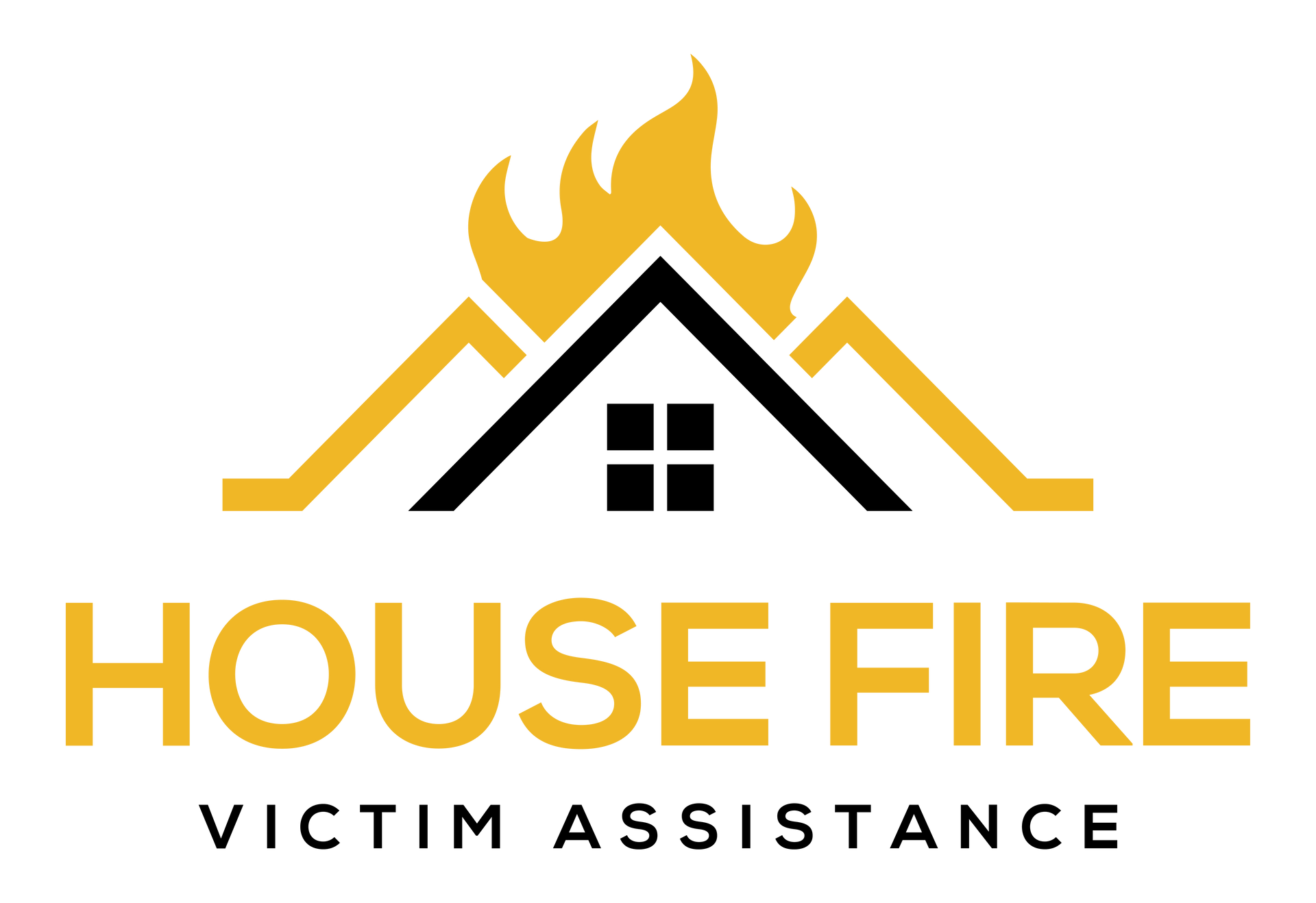What to Do After a House Fire in California: Expert Recovery Tips
Get Help After A House Fire From A-Z
Whether you need board up, fire restoration, insurance help, or wanting to sell as is
Homepage

A house fire can transform your life in mere minutes, leaving behind a path of destruction that feels overwhelming to process. As a fire recovery specialist who has guided hundreds of California families through this devastating experience, I know the overwhelming mix of emotions and questions that flood your mind after the flames are extinguished.
That first moment of standing before your damaged home marks the beginning of a critical journey – one where every decision matters for your family's safety and financial recovery.
The path forward requires careful navigation through immediate safety concerns, insurance claims, and California's unique assistance programs.
Drawing from years of hands-on experience, I'll guide you through key steps like securing your property, documenting losses properly, and accessing important state resources designed specifically for fire victims.
Whether you're dealing with
smoke damage,
temporary housing needs, or intricate
insurance procedures, this thorough resource provides the clear, actionable guidance you need to rebuild your life with confidence.
Immediate Safety Actions
When disaster strikes and fire impacts your home, those first few hours can feel overwhelming. I've helped numerous California families through this challenging time, and I've learned that knowing the right steps can make all the difference in protecting yourself and your loved ones.
First Critical Steps
- Wait for official clearance: Never re-enter your home until firefighters give you explicit permission, even if the flames appear extinguished.
- Contact loved ones: Reach out to family members who weren't present to inform them about the situation and confirm your safety.
- Account for pets: If any pets are missing, let firefighters know immediately. I've seen firsthand how their specialized training can help locate and save beloved animals.
Health And Medical Priorities
- Accept immediate medical evaluation: Even minor-seeming smoke exposure or burns deserve professional attention. I remember working with a family who initially declined treatment, only to face complications hours later.
- Watch for delayed symptoms:
- Difficulty breathing
- Persistent coughing
- Chest pain
- Unusual fatigue
- Headaches
- Keep detailed records: Document all medical evaluations and treatments – your insurance company will need this information later.
Their volunteers arrive on-scene ready to help, often before you've even had time to process what's happened.
Safe Property Assessment Guidelines
Your home needs careful evaluation before any recovery efforts can begin. Here's what I've learned from working with
fire restoration experts:
Professional inspection requirements:
- Wait for fire department clearance
- Have a qualified professional accompany you
- Document damage with photos from safe distances
- Leave items undisturbed for investigation purposes
Structural safety checks:
- Watch for sagging ceilings
- Notice any weakened floors
- Look for compromised walls
- Observe signs of water damage
Utility safety measures:
- Don't activate electrical systems
- Leave gas connections untouched
- Keep water systems off
- Wait for a professional inspection
The desire to rush in and save precious belongings is natural – I've felt it myself while helping families through this process. However, fire-damaged buildings hide dangerous hazards, from unstable structures to toxic materials released during the blaze. Trust in professional guidance for your safety, and remember that your well-being matters more than any possession.
Emergency Services And Documentation
After a house fire, proper documentation becomes your lifeline to recovery. I've guided countless families through this process, and I can't stress enough how crucial those first few steps are. Let's break down exactly what you need to do to protect your interests and start rebuilding.
01.
Essential Contacts To Make
- Utility Companies:
- Contact PG&E or your local provider to disconnect gas and electricity
- Reach out to your water department for immediate shut-off
- Request documentation of all service disconnections
- Insurance and Financial:
- Call your insurance company's 24-hour emergency line
- Start your claim process immediately
- Ask about temporary housing assistance
- Notify your mortgage lender about the property damage
- Request information about available hardship programs
02.
Required Documentation Process
Here in California, we're fortunate to have additional support layers beyond federal assistance. The California Fire Response Fund works hand-in-hand with various state programs to provide targeted aid. I've seen these programs help countless families bridge coverage gaps, especially when:
Fire Department Records:
- Obtain an official copy of the fire report
- Request any additional incident documentation
- Secure copies of any emergency response records
Visual Documentation:
- Take extensive photos of all damaged areas
- Record video evidence of the destruction
- Document damaged personal belongings
- Avoid moving items until insurance adjusters complete their assessment
Communication Records:
- Keep a detailed contact log with names and dates
- Document all conversations with officials
- Save emails and text messages related to the incident
- Store receipts for emergency expenses like hotels and supplies
03.
California-Specific Reporting Requirements
Local Government Notifications:
- File a report with your county assessor's office
- Apply for potential property tax relief
- Document your submission with confirmation numbers
Special Circumstances:
- Submit additional paperwork if located in a high-risk fire area
- Register with Cal Fire when required
- Connect with the California Office of Emergency Services (Cal OES) for disaster assistance
- Access state-specific recovery programs and resources
Create both digital and physical copies of all documentation. Store these in a secure, off-site location – I recommend using a cloud storage service for digital files and a fireproof box at a relative's house for physical copies. This organized approach has helped my clients receive faster claim settlements and better assistance throughout their recovery journey.
Insurance Navigation Process
Having guided countless California residents through post-fire insurance claims, I can tell you that exploring this process feels like stepping into a second job. But don't worry – understanding each step will help you maximize your coverage while minimizing stress during this challenging time.
Initial Claims Procedures
- Call your insurance company's 24/7 emergency hotline immediately after a fire
- Write down your claim number and adjuster's contact information
- Request a detailed breakdown of your policy coverage in writing
- Ask about emergency funds availability for immediate essentials
Your assigned
claims adjuster becomes your primary contact throughout this journey. They'll walk you through the process and schedule an initial property inspection. Pro tip: Keep a dedicated notebook for all insurance-related conversations and follow-ups.
Documentation Requirements
Creating a thorough record of your losses is crucial for a successful claim:
- Photograph and video all damage before cleanup begins
- Create a detailed inventory of damaged items (from major appliances to personal belongings)
- Preserve damaged items until the adjuster inspects them
- Save every receipt related to your claim
- Gather pre-fire photos or videos of your home's contents
- Maintain a digital backup of all documentation

Coverage Assessment Steps
Your policy's fine print matters more than ever now. Standard homeowners' insurance typically covers fire damage, but coverage details vary significantly. Your adjuster will evaluate:
- Structural damage
- Smoke and soot damage
- Personal property losses
- Ground damage
- Debris removal costs
Don't hesitate to ask questions – I've found that understanding your policy rights directly impacts the compensation you receive. Request written explanations for any unclear terms or decisions.
Temporary Living Expenses
Additional Living Expenses (ALE) or Loss of Use coverage helps bridge the gap while your home is uninhabitable. Track these expenses carefully:
- Hotel or rental property costs
- Reasonable meal expenses
- Additional transportation costs
- Storage facility fees
- Laundry services
- Pet boarding if necessary
Keep detailed records of every expense and submit them regularly for reimbursement. Most policies have specific limits on both the amount and duration of coverage, so discuss these boundaries with your adjuster early.
Stay proactive in your communication with the insurance company. Document every conversation, send follow-up emails after important discussions, and don't hesitate to escalate concerns to a supervisor. Remember, you're your own best advocate in this process.
Property Security And Assessment
After experiencing a fire in your home, securing and assessing the damage becomes critical once the fire department gives you the all-clear. Having guided countless California homeowners through this challenging process, I've learned that taking swift, strategic action helps prevent further damage and ensures you'll get the most from your insurance claim.
✅ Securing The Fire-Damaged Property
Your home needs immediate protection from unauthorized access and additional damage. I always recommend partnering with a professional board-up service to properly secure:
- Broken windows and damaged doors
- Holes in walls and roofing
- Any compromised entry points
This crucial step protects against theft, weather damage, and potential liability issues from injured trespassers. Most insurance policies cover these emergency security measures, so take action right away to protect your property.
✅ Professional Damage Evaluation
A detailed professional assessment reveals the true extent of fire damage to your property. Licensed structural engineers and fire damage specialists will:
- Examine your home's foundation and support systems
- Assess the structural integrity of walls and roof
- Identify heat-compromised areas that may look intact
- Document water damage from firefighting efforts
Their detailed evaluation provides essential documentation for insurance claims while creating a solid foundation for your restoration plan. I've seen countless cases where hidden damage would have gone unnoticed without this expert analysis.
✅ Hazardous Materials Identification
Fire damage creates numerous hidden dangers that require professional assessment. Common hazards include:
- Compromised structural elements at risk of collapse
- Exposed electrical systems and gas lines
- Toxic residue from burned synthetic materials
- Asbestos in older home construction
- Potential mold growth in water-damaged areas
California's strict environmental regulations make proper hazard identification especially important. Never handle suspicious materials yourself – let trained professionals assess and document these dangers first.
✅ Salvageable Items Recovery
Once professionals declare your property safe, you can begin recovering salvageable items. Professional restoration specialists bring:
- Specialized cleaning equipment
- Advanced restoration techniques
- Expert knowledge of smoke damage treatment
- Professional documentation methods
Start with essential documents, irreplaceable heirlooms, and valuable possessions. I've watched restoration experts save countless items that homeowners thought were destroyed. Always wear appropriate protective gear and follow these key steps:
- Document everything through photos and detailed lists
- Only enter areas deemed structurally safe
- Prioritize items needing immediate attention
- Keep detailed records for insurance purposes
Some possessions may look undamaged but harbor hidden smoke or water damage. Trust professional evaluation before making final decisions about what to keep or discard. This thorough approach helps maximize your recovery while ensuring your safety throughout the process.
Temporary Housing Solutions
After experiencing a house fire, finding safe shelter becomes your top priority. I've worked with countless fire-affected families, and I've seen firsthand how understanding available housing options helps reduce anxiety during this overwhelming time. Let me share the most effective solutions available for California residents.
Immediate Accommodation Options
Your insurance policy likely includes Additional Living Expenses (ALE) coverage - a key resource that covers hotel stays, short-term rentals, and even meals while you're displaced. I always recommend contacting your insurance provider immediately to verify your coverage limits and activate this essential assistance.
The
American Red Cross and
Salvation Army stand ready to help before insurance benefits begin. These organizations:
- Provide emergency shelter within hours
- Supply essential items like clothing and toiletries
- Offer immediate food assistance
- Connect you with additional local resources
- Help coordinate temporary accommodations
California Housing Assistance Programs
California's robust support system offers specialized programs for fire-displaced residents. Through coordination between the state's Office of Emergency Services, FEMA, and local agencies, you can access:
- Rental assistance grants
- Temporary housing vouchers
- Emergency shelter programs
- Housing counseling services
- Fast-tracked housing applications
Contact your county's housing department right away. They maintain emergency housing lists and can quickly connect you with available resources in your area.
Long-Term Housing Arrangements
Finding stable housing during home repairs or rebuilding requires careful planning. I've found that successful long-term arrangements depend on three key factors:
1. Insurance Coverage Understanding
- Work closely with your adjuster
- Know your temporary housing benefit limits
- Keep detailed records of all expenses
2. Location Considerations
- Distance to work and schools
- Proximity to your damaged property
- Access to reconstruction supervision
- Community support systems
3. Rental Agreements
- Look for month-to-month options
- Ask about disaster-displaced resident terms
- Partner with insurance-friendly property managers
- Document everything for reimbursement
Many California property managers maintain special relationships with insurance companies, often streamlining the rental process for fire-affected families. Save every receipt and housing-related document - they're essential for insurance claims and potential tax deductions.
Financial Recovery Steps
Having helped countless California families journey through post-fire recovery, I've seen firsthand how devastating the financial impact can be beyond immediate property damage.
The good news is that numerous resources exist to help you rebuild your life. Let me walk you through the essential financial steps and assistance options I've found most valuable for families in your situation.
California Disaster Assistance
I've watched the California Office of Emergency Services (Cal OES) spring into action when fires affect multiple homes or trigger emergency declarations.
Through my experience working with FEMA and the Disaster Assistance Improvement Program (DAIP), I've learned that quick action is crucial. These programs often provide grants covering essential expenses that insurance might miss.
Here's my top advice: Register with
FEMA immediately after the fire. I always tell my clients to create a dedicated folder for:
- Photos of all damage
- Receipts for every expense
- Copies of insurance claims
- Records of all correspondence
- Damage assessment reports
Available Relief Programs
I've discovered that many people don't realize just how many organizations stand ready to help fire victims. The
California Department of Social Services offers immediate assistance, while local community groups often create special relief funds. From my experience, these programs typically cover:
- Emergency food and clothing needs
- Short-term housing solutions
- Essential household item replacement
- Critical medical expenses
- Transportation assistance when needed
Mortgage And Tax Considerations
Your mortgage payments don't stop just because disaster strikes – I learned this the hard way while supporting families to manage post-fire financial challenges. Here's what I've found works best: Contact your
mortgage lender immediately. California lenders typically offer several relief options:
Temporary payment pauses
Modified loan terms
Flexible payment plans
Late fee waivers
In the context of taxes, I've seen many families benefit from casualty loss deductions on both federal and state returns. Through the County Assessor's office, you might qualify for property tax relief. I always recommend connecting with a tax professional who specializes in disaster-related claims – their expertise can make a significant difference in your recovery.
Property Value Impact Management
Based on my experience, protecting your property's long-term value requires careful documentation and strategic planning. I've developed a detailed tracking system that includes:
- All restoration work details
- Permit and inspection records
- Fire-resistant upgrade specifications
- Safety improvement documentation
During rebuilding, I strongly recommend incorporating fire-resistant features. I've seen these improvements not only boost property values but also reduce insurance premiums. Many California insurers offer substantial discounts for homes with enhanced fire protection – something I've helped numerous families take advantage of.
Maintain open communication with your insurance adjuster about improvements during restoration. I've found this documentation invaluable for future property assessments and potential sales negotiations.
Clean-Up And Restoration
The cleanup and restoration phase after a house fire is a critical journey toward recovery. Having guided numerous families through this process, I've witnessed firsthand how proper planning and professional expertise can transform a devastating situation into a path forward. Let's explore the essential elements that will help you move through this challenging time.

Professional Service Selection
Finding the right restoration company can make all the difference in your recovery journey. Through my years of experience, I've identified these crucial qualities to look for:
- Licensed and certified in California
- Extensive fire damage restoration experience
- Complete insurance coverage
- Strong local references and portfolio
- Insurance company approval
I always recommend verifying credentials through the Contractors State License Board (CSLB) and reading recent client reviews. While budget matters, prioritize expertise and service quality over the lowest bid – your home's restoration deserves nothing less.
California Safety Regulations
California's strict fire damage restoration regulations protect both property owners and workers. Quality restoration companies must follow detailed guidelines covering:
- Detailed fire damage assessment protocols
- Safe handling and disposal of hazardous materials
- Continuous air quality monitoring
- Strict worker safety measures
Getting proper permits from local authorities isn't just red tape – it's your guarantee that the work meets California's high safety standards. I've seen how this attention to regulatory detail prevents future complications and ensures lasting results.
Environmental Considerations
Modern fire cleanup demands careful attention to environmental impact. In California, effective restoration focuses on these key areas:
- Contaminated material disposal systems that protect groundwater
- Specialized handling of asbestos in older structures
- Environmental protection from cleaning agents
- Advanced air quality control methods
Professional restoration teams use sophisticated containment strategies, including:
- High-efficiency air filtration systems
- Designated clean zones
- Protected work areas
- Eco-friendly cleaning solutions
Timeline And Milestones
Every restoration project tells its own story, but here's a typical timeline I've seen work successfully:
- Initial Assessment and Security (1-2 days)
- Property evaluation
- Emergency boarding and tarping
- Security measures implementation
- Water Removal and Drying (3-7 days)
- Advanced water extraction
- Industrial dehumidification
- Moisture monitoring
- Smoke and Soot Cleanup (7-14 days)
- Surface cleaning
- Air purification
- Material restoration
- Thorough Cleaning and Deodorization (5-10 days)
- Thorough sanitization
- Odor neutralization
- Final cleaning verification
- Structural Repairs (Timeline varies)
- Building restoration
- System repairs
- Final inspections
Stay actively involved by requesting weekly updates and scheduling regular site visits. I've found that maintaining open communication with your restoration team leads to better outcomes and fewer surprises along the way.
Remember to build some flexibility into your timeline – restoration work often reveals hidden challenges that require additional attention.
Rebuilding And Prevention
After experiencing a house fire, rebuilding with prevention in mind becomes a top priority. Having guided countless families through this challenging journey, I've seen firsthand how this phase offers a unique opportunity to create a safer, more resilient home for your family's future.
California Building Codes
California's building codes stand among the nation's strictest, particularly for fire safety. Through my work with local contractors, I've observed these regulations adapt in response to our state's persistent wildfire challenges. Current codes mandate these essential features for new construction and major renovations:
- Class A fire-resistant roofing materials
- Ember-resistant venting systems
- Protected eaves and soffits
- Double-paned windows with tempered glass
- Non-combustible exterior materials in high-risk zones
I always recommend partnering with an architect or contractor who lives and breathes these requirements. Their expertise ensures your rebuilt home not only meets but exceeds safety standards while staying fully compliant with local regulations.
Permit Prevention Measures
The
California permit process requires careful navigation and attention to detail. Your rebuild will likely need several critical permits:
- Building permits for structural modifications
- Electrical permits for detailed rewiring
- Plumbing permits for new installations
- Specialized permits for fire sprinkler systems
- Environmental impact assessments (location-dependent)
- Most local building departments now offer streamlined online permit applications and tracking systems. I've found it incredibly helpful to maintain digital copies of all permits and inspection reports - they're invaluable for both insurance purposes and future reference.
Fire-Resistant Design Options
Modern fire-resistant design beautifully balances safety with style. Through my renovation projects, I've discovered stunning options that offer both protection and visual appeal:
- Cement fiber siding with authentic wood aesthetics
- Fire-resistant deck materials in natural finishes
- Elegant metal roofing with superior fire protection
- Tempered glass windows with protective shutters
- Strategic topographical arrangements creating natural fire breaks
These thoughtful design choices not only enhance your home's safety but often lead to reduced insurance premiums and increased property value. The key lies in layering multiple protective elements through strategic material selection and architectural planning.
Future Prevention Measures
A robust fire prevention strategy combines cutting-edge technology with practical safety measures. Based on my experience helping families rebuild, here are essential preventive elements to consider:
- Smart smoke detection systems with mobile connectivity
- Whole-house sprinkler systems featuring backup power
- Automated maintenance scheduling for safety equipment
- Clearly marked and accessible utility shutoffs
- Well-planned family evacuation routes and meeting points
Maintain a 30-foot defensible space around your home by regularly trimming vegetation and removing potential fuel sources. I recommend creating a detailed emergency preparedness plan that includes:
- Digital copies of crucial documents
- Step-by-step evacuation procedures
- Emergency service contact information
- Regular safety drills with family members
Schedule annual professional inspections of your fire prevention systems and update your insurance coverage to reflect new safety improvements. These ongoing efforts create a complete shield of protection for your rebuilt home and loved ones.
Get a Cash Offer From a Trusted Local Investors
Home2 - Website Form
Frequently Asked Questions
How long does the insurance claim process typically take in California?
I've worked with countless homeowners through insurance claims, and I can tell you that most straightforward cases in California take about 30-90 days to resolve. The good news is that California law protects you by requiring insurance companies to acknowledge your claim within 15 days and make a decision within 40 days of receiving proof of loss.
From my experience, major disasters or complex claims might stretch to 6-12 months. Here's a tip: partner with a licensed public adjuster and keep detailed records of everything – it's amazing how much faster things move when you're organized!
What items should never be salvaged after a house fire?
Let me be clear about this – your health and safety come first. Always discard:
- Perishable food items and medicines
- Cosmetics and personal care products
- Smoke-damaged mattresses and upholstered furniture
- Soft toys that have absorbed smoke or soot
- Heat or water-damaged electrical appliances
Even if those appliances look fine on the outside, I've seen enough hidden damage to strongly recommend professional evaluation before plugging anything back in.
Can I stay in my home during fire damage restoration?
Trust me on this one – staying in your home during fire damage restoration isn't safe, even if parts of your house look okay. I've seen firsthand how structural damage, toxic fumes, and hidden hazards can pose serious risks.
The good news? Most insurance policies cover temporary living expenses during restoration. Always wait for the green light from both the fire department and structural engineers before considering even brief visits back home.
How do I handle important documents destroyed in the fire?
Having helped families through this process, I've developed a straightforward approach to replacing essential documents:
- Birth certificates: Contact the California Department of Public Health
- Driver's license: Visit your local DMV
- Federal documents (Social Security cards, passports): Access through respective agency websites
- Insurance papers: Contact your insurance provider directly
Here's a valuable lesson I've learned: store digital copies of important documents in secure cloud storage. Many insurance policies will even cover the cost of document replacement.
What financial assistance is available specifically for California fire victims?
You'll be relieved to know there's substantial help available for California fire victims. I've guided many families through these resources:
- California Disaster Assistance Act (CDAA) funding
- FEMA grants for temporary housing and repairs
- California Department of Insurance support services
- Red Cross and Salvation Army emergency assistance
- California Office of Emergency Services aid programs
Remember, each program has different qualification requirements, so I always recommend applying to multiple sources of assistance to maximize your support.
Conclusion
I've seen firsthand how devastating a house fire can be for California families, but there's hope and help available for your recovery journey. While the path ahead might seem overwhelming, you're already taking positive steps by seeking guidance and support.
California offers a detailed and robust support system for fire victims, and I'll share how you can make the most of these resources.
Let's break down your recovery roadmap into manageable steps:
- Immediate Safety First
- Contact emergency services
- Find temporary shelter if needed
- Secure your property from further damage
- Documentation is Critical
- Take detailed photos of all damage
- Save receipts for emergency expenses
- Keep a recovery journal with dates and actions taken
Working with professionals has made a significant difference for many families I've helped through this journey. From certified restoration specialists to insurance adjusters, these experts understand California's unique challenges and regulations. They'll help you avoid common pitfalls while maximizing your insurance benefits and assistance options.
Here's what I've learned makes the biggest impact on successful recovery:
- Stay organized with a dedicated recovery folder
- Maintain regular communication with your insurance company
- Connect with local disaster relief organizations
- Track all conversations and agreements in writing
I've watched countless California families rebuild their lives after devastating fires, and their stories consistently show that taking methodical, well-documented steps leads to the best outcomes. Your adaptability, combined with California's robust support network, creates a solid foundation for recovery.
Remember, every small victory counts – whether it's securing temporary housing or filing your first insurance claim. You're not just rebuilding a house; you're creating a new chapter in your life story. And with the right support and guidance, you'll get there one step at a time.



